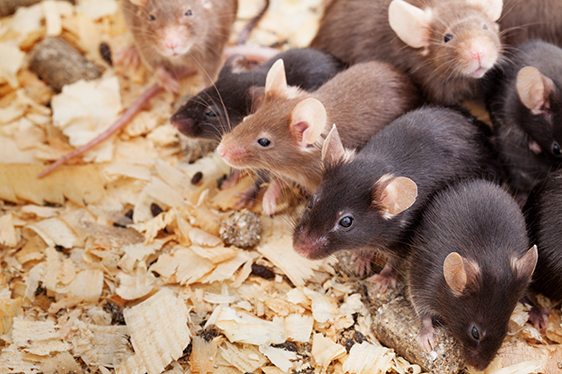Have a look out, mice may be about
 PRODUCTION ADVICE - OCTOBER 2020 - PESTS & WEEDS
PRODUCTION ADVICE - OCTOBER 2020 - PESTS & WEEDS
By Adrian Smith
Senior Land Services Officer - Mixed Farming Systems
P: 03 5881 9932 | M: 0447 778 515 | E: adrian.smith@lls.nsw.gov.au
 While most of our region is enjoying the benefits of rain, it also means conditions are improving for a range of pests and diseases that we typically don’t see during drier times.
While most of our region is enjoying the benefits of rain, it also means conditions are improving for a range of pests and diseases that we typically don’t see during drier times.
And one of these is mice.
There is little evidence of significant numbers locally at the moment, but good spring conditions are conducive to numbers building rapidly. Mice can start breeding from six weeks of age and can have a litter of anywhere between six and 10 every 20-odd days after that. With plenty of cover and sources of feed around, particularly heading into and after harvest, producers are urged to remain vigilant.
In fact, some areas of northern NSW and southern Queensland have already reported some crop damage from mice, as have some areas of South Australia and western Victoria. Apart from the direct damage to crops, mice can also spread disease to livestock and humans, and can cause other problems if present in feedstuffs.
How big is the mice problem?
According to the Grains Research and Development Corporation (GRDC), rather than the ‘boom and bust’ cycle of plagues we have seen in the past, many areas are now seeing persistent problems associated with mice.
It is thought that adopting best practices such as no-till and stubble retention are contributing to what is now an annual problem in many areas, not just cyclical.
Indeed, the problems mice cause to agriculture has seen the establishment of a National Mouse Group, with the GRDC investing over $4 million into mouse control research.
What should I be doing right now?
You should be vigilant. The mice should be out in crops, so just have a look to see any signs of numbers building or damage to crops.
Importantly, we encourage you to enter information you collect about mice numbers on your property at the ‘MouseAlert’ website - https://www.feralscan.org.au/mousealert/?utm_source=grdc_website&utm_medium=mouse_control_landing_page&utm_campaign=mouse_control_campaign&utm_content=body_content
It is important that producers enter their own data, as numbers can vary significantly between and across districts. Anyone can log onto the website and see first-hand changes in mouse activity. The information can be used to alert local biosecurity authorities and other fellow producers about changes in mouse populations, which can help everyone reduce the problems they cause.
The GRDC has a wealth of information about mice and control options, and we encourage you to review the resources available - https://grdc.com.au/resources-and-publications/resources/mouse-control
However, the key message is to remain alert, not alarmed!
Monitor paddocks for any signs of mice numbers building and crops for any sign of damage. Year-round paddock and farm-hygiene practices, coupled with strategic and targeted baiting if required, are important to minimise the food and shelter for mice, in order to keep numbers in check.